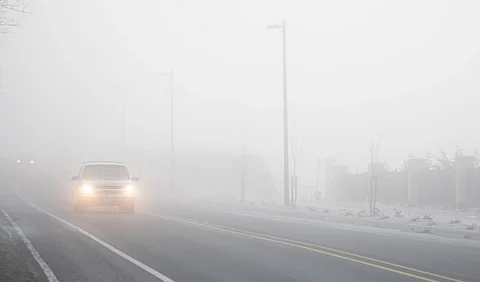
- Home
- Live Blog
- Breaking News
- Top Headlines
- Cities
- NE News
- Sentinel Media
- Sports
- Education
- Jobs

This winter has also brought to people across the Northeastern region a new experience of the mercury level dipping like never before around this time. Guwahati, for instance, had witnessed the temperature going down below 10 degrees Celsius last Thursday, something that reportedly had not happened in the past four decades. On the other hand, Assam towns like Dibrugarh, North Lakhimpur, Digboi, and Jorhat experienced similar trends—below 10 degrees Celsius—in the last week of December itself. Temperatures recorded in the capital cities of Shillong, Kohima, and Imphal too have dipped significantly. What is even more significant is the sudden drop in temperature—in some towns, by two to three degrees—immediately after sunset. It is important to note that though the general perception is that winters will be increasingly warmer because of large-scale felling of trees and a rapid decrease in green cover, the reality is that the temperature has been dipping. Scientists, however, have pointed out that, as with excessive increases in temperature during the summer season, extreme cold is also likely to occur during the winter. Scientists are also clear about the fact that cold extremes will still occur even as winters warm overall, as is happening with warm extremes in the summer. Scientists have also pointed out that global heat records outpace cold records—2023 was the hottest year on record by a huge margin. While climate change and global warming have happened because of various human-caused activities, the situation of severe ups and downswings—be it in winter or in summer—is a stark reality and has now come to stay. Some scientists say that warming in the Arctic increases the likelihood that frigid, polar air can sweep southward. Explaining the unprecedented dip in temperature during the winter vis-à-vis the unprecedented rise in temperature during the summer, scientists have also pointed out that weather is heavily influenced by the jet stream, a wavy river of fast-moving air high in the atmosphere. When the jet stream swings south, it can push cold Arctic air into North America, Europe, and Asia. When it retreats north, warm air will also push further north. There is also another factor to consider: the polar vortex, a belt of strong winds that sits extremely high in the stratosphere, above the level of the jet stream, around the North Pole. The polar vortex, which is like a spinning top, in its normal state rotates very fast, keeping blisteringly cold air locked in the Arctic region. But, all said and done, we humans are to blame.